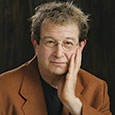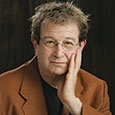When I commenced my flute studies with Julius Baker at Juilliard in 1968, he said that it was essential for me to develop my own personal concept of sound, which would form the basis for my ongoing improvement. This began my quest to listen at many different levels. I returned to this scenario recently when I was teaching fundamentals to a 12-year-old student. I gave her the names of several flutists and told her to listen to performances of each. The following week when I asked her about the assignment, she said that they all sounded exactly alike. I explained to her that as she improves, the way she hears will change. This is the road to concept development. Mr. Baker encouraged me to attend Jean-Pierre Rampal’s masterclass in Nice, France, which I did for two summers in the late 1960s. This was an opportunity to hear flute playing from all over the world, and it was indeed an eye- and ear-opening experience.
Attending music school in New York City afforded me the opportunity to hear great live music performances. While at Juilliard, I purchased a large portable cassette deck which I carried around on my shoulder. I recorded my rehearsals and performances (except where union regulations barred recordings) so I would always have a way to critique myself. Friends made fun of me for carrying this “briefcase” on my shoulder all the time, but I lived with it because I felt it was important. This type of critical listening has always been intrinsic to my improvement.
After graduating from Juilliard, I spent several years as a freelance musician in the New York area. I was fortunate to serve as an extra in the New York Philharmonic flute section, and sat next to my mentor, Julius Baker. This was a life-changing listening opportunity that I treasure.
In 1976, after an audition, I was invited by Maurice Abravanel, Music Director of the Utah Symphony Orchestra, to join the ensemble as principal flutist. As a chamber music musician in New York City with limited orchestra experience, this invitation afforded an immense challenge and opportunity for growth. Listening to music was no longer just a pleasant way to pass the time – it was an art form and science to be mastered.
During my first ten seasons in the Utah Symphony, I ordered the miniature orchestral scores and vinyl records as soon as upcoming subscription literature was announced. I devoted a great deal of time to critical listening and playing along with vinyl recordings so I would always be as prepared as possible. Once I assumed the orchestra’s principal flute chair, I realized that the art of listening was different in an orchestral wind section. The right pitch in a wind section is a battle of egos. My personal solution was to assume that I was always the one who was out of tune and, hence, adjusted my pitch to compensate for it. I realized quickly that this solution improved the acuity of my listening and provided the fringe benefit of making any frowning faces around me disappear most of the time. Learning to blend and tune in a large ensemble also expanded my parameters of versatility. It taught me the necessity of altering my embouchure so that it was malleable enough to be able to play any musical line sharper or flatter and adjust to whatever the prevailing circumstances might be. Nowadays, most ensembles spend a significant amount of time performing outside where temperatures torture different instruments in different directions. Great listening and versatility are inextricably related.
I realized that my concept of sound was reflected in the quality of my flute-voice. Concentrated listening assisted me in the development of what I call my pursuit of an aesthetic. More simply – my will to improve. When I am playing, I try to hear two sounds – the sound I have along with the sound I want. I think of them as two parallel lines that never actually meet. Striving to make them intersect leads to lifelong improvement, and that is how I define my pursuit of an aesthetic.
During my career, when I attended concerts as an audience member, I listened analytically and critically, much like the way a botanist looks at a beautiful flower. I admit that after a lifetime of listening for a living, I now have to make a conscious effort to shift gears to listen simply for relaxation and pleasure.
Embracing the art of listening has not changed much over time, but heightened electronic technology during the past fifty years has caused quantum leaps in the methodology for doing so. As a student, I spent many hours on the phone and on public transportation locating vinyl records, sheet music and scores in order to enlarge my musical sphere. Access to information has been streamlined by the Internet via innumerable websites and listening posts like YouTube, iTunes, etc. We may be speaking a different language nowadays, but the fundamentals of the art of listening have not changed.
While much of our growth as musicians and instrumentalists is done with our ears, time spent on physical practice of the instrument is equally important. Mastery cannot be achieved without both. They complement each other. Additionally, an understanding of how to listen makes us practice smarter.
As a final note, every time I pull up at a stoplight, and the car next to me has music playing so loud that the car is bouncing up and down, I recall that the importance of ear protection for musicians did not surface until relatively late in my career. I have been a tinnitus (ringing in the ears) sufferer for over 30 years. While living with a high-pitched squeal in my ears most of the time never eclipsed my career, it was very irritating. Your hearing is a precious attribute, so take care of it and use ear protection in loud environments.






